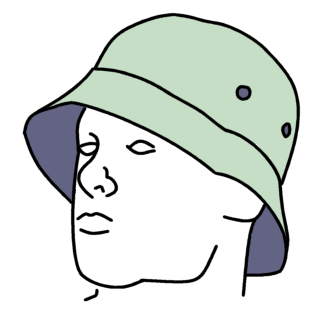The Real Cost of Fashion

Boy wearing a hip bucket hat drawing. Photo via WIkimedia Commons under the Creative Commons License. https://commons.wikimedia.org/wiki/File:Bucket_hat_line_drawing.png
Bucket hats, Harlem pants, and some pulled up Nike socks; high school students are obsessed with being a part of the newest fashion trends. It’s normal for teenagers to care about what they look like, yet most don’t take into account any cost other than the price of their clothes and for the most part, neither do adults. Very few think about what it takes to make them look the way that they do.
When consumers shop for low prices with global brands like H&M, Mango, Primark, the Gap and Walmart, those prices might not be such a great deal after all. Over the past 15 years, garment factory collapses have become a common occurrence.
The most recent garment factory disaster in history happened two years ago in Bangladesh. The 2013 collapse of the Rana Plaza building caused more than 1,000 deaths. The workers in the tragedy were earning less than $3 a day due to these clothing companies cutting prices.
Another cause for these disasters includes the rapid rate at which the fashion industry is changing and accommodating for its different customers. The more products needing to be manufactured, the more factory workers needed. This makes both salaries and the safety precautions immensely smaller than they should be.
The documentary The True Cost discusses the Rana Plaza building collapse. It features interviews from survivors and the families of those who were killed. The documentary focuses on the issue that despite the occurrence of all these garment factory disasters, both the companies and the consumers fail to recognize their contribution.
Just half the companies who were connected to factories in the building have made contributions, they include:
Bonmarché, C&A Foundation, Camaïeu, El Corte Inglés, Inditex, KiK, Loblaw, LPP S.A., Mango, Mascot, Premier Clothing, BRAC USA. N Brown Group (parent company of Primark,Walmart, and The Children’s Place) , VF Corporation, Hudson Bay Company, and Next. The Gap has also made contributions as brands who source from Bangladesh, but had not had a sourcing relationship with Rana Plaza.
It’s a good idea to look into brands you are supporting and whether or not you are okay with how they handle their manufacturing. You could probably get your cool bucket hat from a company that uses a fair trade manufacturer, meaning that all workers associated with their brand in Eastern countries get an equal amount of reimbursement for their work.
If you are interested in learning more about the invisible side of the fashion industry, check out The True Cost on Netflix.

I am the Senior News Editor for The Jetstream Journal. I currently have blue hair and an irrational fear of red vegetables. I'm not involved in any other...








Mary • Nov 2, 2015 at 2:10 pm
Loved The True Cost, I haven’t been shopping since I watched it.